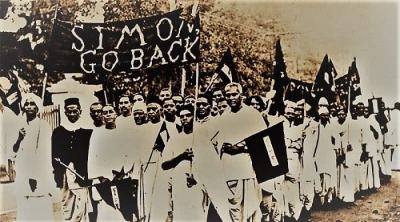
Simon Commission was constituted under the leadership of Sir John Simon to look into the functioning of the constitutional system in India and suggest changes. It was officially known as ‘Indian Statutory Commission’ and consists of four conservative, two Labourites and one liberal member from the British Parliament.
In 1927, the annual session of the congress was held at Madras. It decided to Boycott the commission. The Muslim league also decided to boycott the commission. The commission arrived in India on 3 February 1928. On that day, the entire country observed a hartal. In the afternoon on that day, meeting was held all over the country to condemn the appointment of the commission and to declare that the people of India would have nothing to do with it. There was firing at demonstrators in Madras and lathi charges at many places. The commission faced massive protest demonstrations and hartals wherever it went. The central legislative assembly decided by a majority that it would have nothing to do with the commission. All over the country the cry of ‘Simon Go Back’ was raised.
In December 1928, the congress met at Calcutta under the presidentship of Motilal Nehru. At this session, Jawaharlal Nehru, Subhas Chandra Bose and many others pressed the congress to demand complete independence. The congress, however, passed a resolution demanding dominion status. This meant less than complete independence. But it was declared that if the dominion status was not granted within one year, the congress would demand complete independence and would launch a mass movement to achieve it. The Indian independence league continued to rally the people behind the demand for complete independence throughout 1929. The mood of the people throughout the country had changed by the time the congress held its next annual session.
Picture Credit : Google




